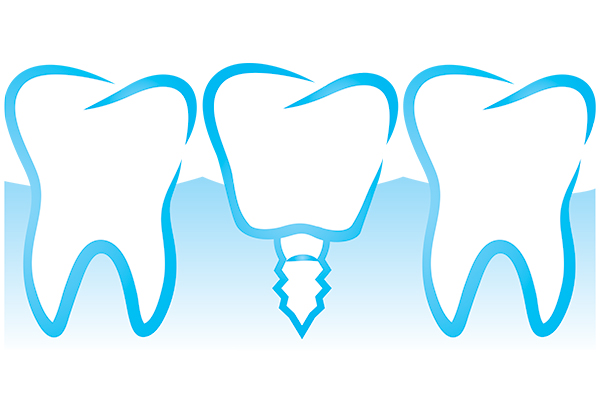How Dental Implants Compare to Natural Teeth

Dentists have been using dental implants for decades. Many of these dental professionals consider these restorations the gold standard in tooth replacements. Getting implants may be the most rewarding procedure you could ever get. But some people wonder what implants have that natural teeth do not. If you want to know how dental implants compare to your natural dentition, here are the details.
Their foundation is the jawbone
A healthy jawbone will provide more stability to the titanium rods. Successful osseointegration allows the healing of gum and bone tissues around the rods. The implants will stay strong if the jawbone heals well from the surgery. This will need months of recovery.
Natural teeth have a slight movement because of the roots and ligaments attaching them to the gums. Dental implants fuse with the jawbone. This stops them from moving. The lack of movement in implants makes them more tenacious than natural teeth.
Thick jawbones can add more stability to the titanium rods. This allows the implants to bite hard and chew well. It also helps the person speak better. Thin and weak jawbones will need a bone graft before dental implant surgery. This procedure will strengthen the jawbone.
The patient must go through months of full healing first before the dental implants come in. But there are cases when the dentist places the titanium rod with the bone graft. These two components could then heal together. The rods will stimulate the jawbone. This will signal the body to send more nutrients to that area of the jaw for tissue healing and regeneration.
Do not decay
The mouth is always full of bacteria. These microorganisms love to eat the sugars in the mouth. They release acids after. Natural teeth are vulnerable to bacterial acids. Cavities start to form once these acids attack the enamel. Untreated tooth decay will lead to tooth loss.
Dental implants cannot decay. Bacterial acids cannot eat through the titanium posts, porcelain crowns, and titanium abutments. The surrounding tissues need to be free of food particles. Proper oral care can make these prosthetics last for a long time.
Their main component is titanium
It is obvious that the most enduring parts of dental implants are the titanium rods and abutments. The post serves as the replacement root. The abutment is the connecting point between the post and the dental crown. These two components have titanium, which is one of the sturdiest metals known to man.
Titanium is a common go-to metal in medical procedures. It can bind to the human bone without any complications. It also resists degradation. The jawbone will fuse with the titanium rods during osseointegration. This will provide stability to the titanium rods and keep them in position.
Keep neighboring teeth stable
Like natural teeth, implants maintain a fixed position in the dental arch. The neighboring teeth stay in position. These surrounding teeth start to shift into the dental space when there is tooth loss. This slow movement changes the bite of the individual. It can also interfere with teeth replacement.
A wrong bite leads to jaw problems. Temporomandibular joint problems can result in headaches and jaw pain. Implants take the place of natural missing teeth. These restorations can stabilize the neighboring teeth.
Prevent jawbone loss
The presence of dental roots keeps the jawbone strong and intact. The roots signal the body to send nutrients to the jawbone. The absence of dental roots stops the flow of nutrients. Tooth loss leads to the onset of jawbone loss.
Implants act as tooth roots. This continues the nutrient flow back to the jawbone. The longer the implants stay in the jawbone, the stronger the foundation is. This prevents jawbone loss.
Prevent premature wrinkles and facial sagging
Missing teeth result in the onset of jawbone loss. The body tends to reuse nutrients the body does not use anymore. That is why the jawbone shrinks, resulting in the collapse of the face’s lower third. Wrinkles form and the skin sag because of this event.
Challenging to break
The titanium rods are deep in the jawbone. The abutments lie almost above the gumline. These are the titanium parts of dental implants. They are indestructible.
The dental crown is not. These exposed parts are prone to wear. They can break or deteriorate but with more effort. The patient must learn to avoid biting on or chewing hard foods or objects.
Dental implants are stronger and more lasting than natural teeth
Replacing natural teeth with dental implants is always a plus for dental health. Its titanium and porcelain components are more lasting and decay-free. Proper oral hygiene and routine dental checks are ways to care for them. Your dentist will determine if you are qualified to have these restorations.
Are you considering getting dental implants in the Fort Lee area? Get more information at https://fortleefamilydental.com.
Check out what others are saying about our dental services on Yelp: Dental Implants in Fort Lee, NJ.
Recent Posts
Full mouth dental implants are an option that many patients choose when they need to replace their missing teeth. Our smile is the first impression we have when meeting a new person. We all want that impression to be warm and welcoming. When our smile is somewhat imperfect, we tend to lack confidence and feel…
Advances in dentistry have made it possible to replace missing teeth with dental implants that are more similar to natural teeth than other teeth replacement options. Many people lose teeth due to gum disease, decay, and injury. Losing teeth often lead to numerous negative consequences. It can affect your smile, weaken your jawbone, and alter…
You may have heard about dental implants as a solution for a missing tooth, but did you know they can replace multiple missing teeth as well? This guide provides you with all of the information you should know about dental implants before you decide whether or not they are appropriate for your teeth replacement needs.Dental…
Gum disease, if left untreated, often results in tooth loss, leaving many patients to wonder if they can get dental implants. Even gum disease patients who do not develop the advanced form of the disease, known as periodontitis, may want to replace missing or decayed teeth with implants. Is this possible, or will unhealthy gums…


